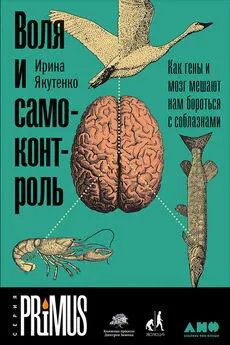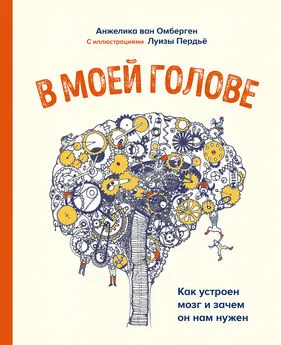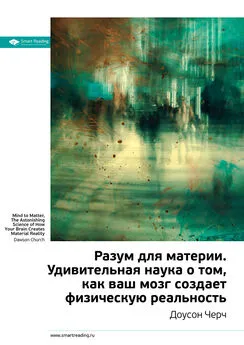Рейчел Херц - Почему мы едим то, что едим [Наука о том, как наш мозг диктует нам, что есть]
- Название:Почему мы едим то, что едим [Наука о том, как наш мозг диктует нам, что есть]
- Автор:
- Жанр:
- Издательство:Литагент 5 редакция
- Год:2021
- Город:Москва
- ISBN:978-5-04-097490-0
- Рейтинг:
- Избранное:Добавить в избранное
-
Отзывы:
-
Ваша оценка:
Рейчел Херц - Почему мы едим то, что едим [Наука о том, как наш мозг диктует нам, что есть] краткое содержание
Какие музыкальные жанры лучше всего подчеркивают вкус красного вина? Почему нам хочется калорийной пищи, когда нас постигают неудачи? Как наша личность соотносится с предпочтением сладкого или соленого?
Эта книга, словно чуткий проводник, помогает читателю уловить и распознать сенсорные, психологические и физиологические факторы, лежащие в основе пищевых привычек. С этим знанием вы сможете сделать каждый прием пищи осознанным и здоровым, а также получать только удовольствие от еды.
Почему мы едим то, что едим [Наука о том, как наш мозг диктует нам, что есть] - читать онлайн бесплатно ознакомительный отрывок
Интервал:
Закладка:
58. Wadhera and Capaldi-Phillips, «A review of visual cues associated with food».
59. Там же.
ПРИМЕЧАНИЯ К СТР. 158–166
60. K. Okajima, J. Ueda, and C. Spence, «Effects of visual texture on food perception,» Journal of Vision 13 (2013): 1078, http:// jov.arvojournals.org/article.aspx?articleid=2143185.
1. WD-50, in New York City in 2013.
2. https://www.starchefs.com/features/ten-international-pio-neers/ recipe-sound-of-the-sea-heston-blumenthal.shtml.
3. A.-S. Crisinel et al., «А bitLersvveet symphonyy System;-!tically modulating the taste of food by changing the sonic properties of the soundtrack playing in the background», Food Quality and Preference 24 (2012): 201–204.
4. C. Spence, «Crossmodal correspondences: A tutorial review», Attention, Perception and Psychophysics 73 (2011): 971–995.
5. C. Spence, M.U. Shankar, and H. Blumenthal, «‘Sound bites’: Auditory contributions to the perception and consumption of food and drink», in F. Bacci and D. Melcher, eds., Art and the Senses (London: Oxford University Press, 2010).
6. F. Rudmin and M. Cappelli, «Tone-taste synesthesia: A replication», Perceptual and Motor Skills 56 (1983): 118.
7. R. E. Cytowic, The Man Who Tasted Shapes (Cambridge, MA: MIT Press, 2003).
8. C. Offord, «Hearing things», The Scientist Magazine, March 1,2017:17–18.
9. Об этом рассказал Джеймс Петри, шеф-повар ресторана The Fat Duck ведущим передачи The World на Public Radio International, 16 февраля, 2012.
10. C. Spence and O. Deroy, «On why music changes what (we think) we taste», i-Perception 4 (2013): 137–140.
11. M. Zampini and C. Spence, «The role of auditory cues in modulating the perceived crispness and staleness of potato chips», Journal of Sensory Studies 19 (2004): 347–363.
12. Spence, Shankar, and Blumenthal, «‘Sound bites’».
13. Max Read, «The New Sun Chips Bags Are Louder Than a Lawnmower», Gawker, August 17, 2010, http://gawker.com/5615444/ the-new-sun-chips-bags-are-louder-than-a-lawnmower.
14. Децибелы – логарифмическая единица уровней. Это значит, что звук разрывания нового пакета SunChips, равный 95 дБ, был примерно в десять раз громче звука разрывания обычного пакета в 70–75 дБ.
ПРИМЕЧАНИЯ К СТР. 166–174
15. 70 дБ на 25 % громче 50 дБ.
16. A. T. Woods et al., «Effect of background noise on food perception», Food Quality and Preference 22 (2011): 42–47.
17. K. S. Yan and R. Dando, «A crossmodal role for audition in taste perception», Journal of Experimental Psychology: Human Perception and Performance 41 (2015): 590–596.
18. D. Michaels, «Test flight: Lufthansa searches for savor in the sky,» Wall Street Journal, July 27, 2010, http://www.wsj.com/ articles/SB1000142405274803294904575384954227906006.
19. K. Yasumatsu et al. «Umami taste in mice uses multiple receptors and transduction pathways», Journal of Physiology 590 (2012): 1155–1170.
20. A. North, D. J. Hargreaves, and J. McKendrick, «In store music affects product choice», Nature 390 (1997): 132.
21. P. Jackman, «Of Wine and Song», Globe and Mail, May 15, 2008.
22. L. D. Stafford, E. Agobiani, and M. Fernandes, «Perception of alcohol strength impaired by low and high volume distraction», Food Quality and Preference 28 (2013): 470–474.
23. M. Sullivan, «The impact of pitch, volume and tempo on the atmospheric effects of music», International Journal of Retail and Distribution Management 30 (2002): 323–330.
24. C. Caldwell and S. A. Hibbert, «The influence of music tempo and musical preference on restaurant patrons’ behavior», Psychology and Marketing 19 (2002): 895–917.
25. R. E. Milliman, «The influence of background music on the behavior of restaurant patrons», Journal of Consumer Research 13 (1986): 286–289.
26. T. C. Roballey et al., «The effect of music on eating behavior», Bulletin of the Psychonomic Society 23 (1985): 221–222.
27. C. Spence and M. U. Shankar, «The influence of auditory cues on the perception of, and responses to, food and drink», Journal of Sensory Studies 25 (2010): 406–430.
28. B. Wansink and K. Van Ittersum, «Fast food restaurant lighting and music can reduce calorie intake and increase satisfaction», Psychological Reports 111 (2012): 228–232.
ПРИМЕЧАНИЯ К СТР. 175–186
29. C. G. Forde et al., «Texture and savoury taste influences on food intake», Appetite 60 (2012): 180–186.
30. B. Piqueras-Fiszman and C. Spence, «The influence of the feel of product packaging on the perception of the oral-somatosensory texture of food», Food Quality and Preference 26 (2012): 67–73.
31. B. G. Slocombe, D. A. Carmichael, and J. Simner, «Cross-modal tactile-taste interactions in food evaluations», Neuropsychologia 88 (2015): 58–64.
32. S. A. Cermak, C. Curtin, and L. G. Bandini, «Food selectivity and sensory sensitivity in children with autism spectrum disorders», Journal of the American Dietetic Association 110 (2010): 238–246.
33. C. Nederkoorn, A. Jansen, and R. C. Havermans, «Feel your food: The influence of tactile sensitivity on picky eating in children», Appetite 84 (2015): 7-10.
34. L. M. Bartoshuk et al., «Effects of temperature on the perceived sweetness of sucrose», Physiology and Behavior 28 (1982): 905–910.
35. L. Engelen et al., «The effect of oral and product temperature on the perception of flavor and texture attributes of semi-solids», Appetite 41 (2003): 273–281.
36. A. Cruz and B. G. Green, «Thermal stimulation of taste,» Nature 403 (2000): 889–892.
37. B. Piqueras-Fiszman et al., «Does the weight of the dish influence our perception of food?» Food Qualityand Preference 22(20111: 753–756.
1. Wadhera and Capaldi-Phillips, «A review of visual cues associated with food on food acceptance and consumption»; Wansink, «Environmental factors that increase the food intake and consumption volume of unknowing consumers».
2. A. V. Madzharov and L. G. Block, «Effects of product unit image on consumption of snack foods», Journal of Consumer Psychology 20 (2010): 398–409.
3. B. E. Kahn and B. Wansink, «The influence of assortment structure on perceived variety and consumption quantities», Journal of Consumer Research 30 (2004): 519–533.
4. Wansink, «Environmental factors that increase the food intake and consumption volume of unknowing consumers».
ПРИМЕЧАНИЯ К СТР. 187–196
5. «Home Activities», Calorie Lab, http://calorielab.com/burned/?mo= se &gr=05&ti=home+activities&q&wt=150&un=lb&kg=68.
6. B. Wansink, C. R. Payne, and M. Shimizu, «The 100-calorie semi-solution: Sub-packaging most reduces intake among the heaviest», Obesity 19 (2011): 1098–1100.
7. «Reduced Fat & Low Calorie Foods», Sugar Stacks, http://www. sugarstacks.com/lowfat.htm.
8. V. Provencher, J. Polivy, and C. P. Herman, «Perceived healthiness of food: If it’s healthy, you can coat more!» Appetite 52 (2009): 340–344.
9. J. Koenigstorfer and H. Baumgartner, «The effect of fitness branding on restrained eaters’ food consumption and post-consumption physical activity», Journal of Marketing Research 53 (2015): 124–138.
10. K. Wilcox et al., «Vicarious goal fulfillment: When the mere presence of a healthy option leads to an ironically indulgent decision», Journal of Consumer Research 36 (2009): 380–393.
11. A. Chernev, «The dieter’s paradox», Journal of Consumer Psychology 21 (2011): 178–183.
12. «U.S. consumers across the country devour record amount of organic in 2014», Organic Trade Association website, April 15, 2015, https://www.ota.com/news/press-releases/18061.
13. «US Obesity Levels, 1990–2015», ProCon.org, http://obesity.pro-con.org/view.resource.php?resourceID = 006026.
14. J. P. Schuldt and N. Schwarz, «The ‘organic’ path to obesity? Organic claims influence calorie judgments and exercise recommendations», Judgment and Decision Making 5 (2010): 144–150.
15. J. P. Schuldt, D. Muller, and N. Schwarz, «The ‘fair trade’ effect health halos from social ethics claims», Social Psychological and Personality Science 3 (2012): 581–589.
16. A. J. Crum and E. J. Langer, «Mind-set matters: Exercise and the placebo effect», Psychological Science 18 (2007): 165–171.
17. Gretchen Reynolds, «A Placebo Can Make You Run Faster», New York Times «Well» blog, October 14, 2015, http://well.blogs.nytimes. com/2015/10/14/a-placebo-can-make-you-run-faster/?_r=0.
18. A. J. Crum et al., «Mind over milkshakes: Minclsc'tt, not just nutrients, determine ghrelin response», Health Psychology 30 (2011): 424–429.
19. Morning Edition, NPR, April 30, 2014, http://www.npr. org/player/v2/mediaPlayer.html?action= 1&t=1&islist = false&id=299179468&m=302858884, and Alix Spiegel, NPR blog post, April 14, 2014, http://www.npr.org/ blogs/health/2014/04/14/299179468/mind-over-milkshake-how-your-thoughts-fool-your-stomach.
ПРИМЕЧАНИЯ К СТР. 196–202
20. https://www.nhlbi.nih.gov/health/educational/lose_wt/eat/ shop_fat_ free.htm.
21. C. P. Herman, D. A. Roth, and J. Polivy, «Effects of the presence of others on food intake: A normative interpretation», Psychological Bulletin 129 (2003): 873–886.
22. J. M. de Castro and E. M. Brewer, «The amount eaten in meals by humans is a power function of the number of people present», Physiology and Behavior 51 (1992): 121–125.
23. J. M. de Castro, «Social facilitation of duration and size but not rate of the spontaneous meai intake of humans», Physiology and Behavior 47 (1990): 1129–1135. Это одно из многочисленных исследований, проведенных де Кастро и его коллегами, подтверждающих влияние социальной фасилитации на потребление пищи.
24. V. I. Clendenen, C. P. Herman, and J. Polivy, «Social facilitation of eating among friends and strangers», Appetite 23 (1994): 1-13.
25. C. P. Herman and J. Polivy, Breaking the Diet Habit: The Natural Weight Alternative (New York: Basic Books, 1983).
26. S. J. Goldman, C. P I k'rman, and J. Polivy, «Is the effect of a social model on eating attenuated by hunger?» Appetite 17 (1991): 129–140.
27. Herman, Roth, and Polivy, «Effects of the presence of others on food intake».
28. D. A. Roth et al., «Self-presentational conflict in social eating situations: A normative perspective», Appetite 36 (2001): 165–171.
29. R. F. Baumeister, «A self-presentational view of social phenomena», Psychological Bulletin 91 (1982): 3-26.
30. R. C. Hermans et al., «Mimicry of food intake: The dynamic interplay between eating companions», PLoS ONE 7 (2012): e31027.
Читать дальшеИнтервал:
Закладка:
![Обложка книги Рейчел Херц - Почему мы едим то, что едим [Наука о том, как наш мозг диктует нам, что есть]](/books/1061252/rejchel-herc-pochemu-my-edim-to-chto-edim-nauka-o-t.webp)









